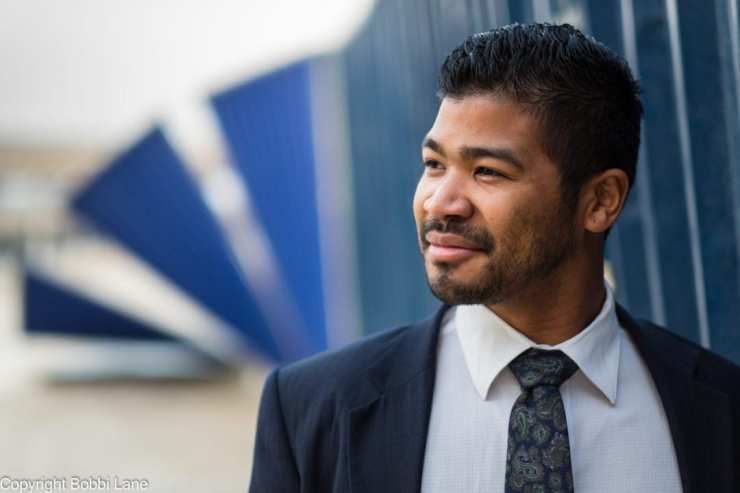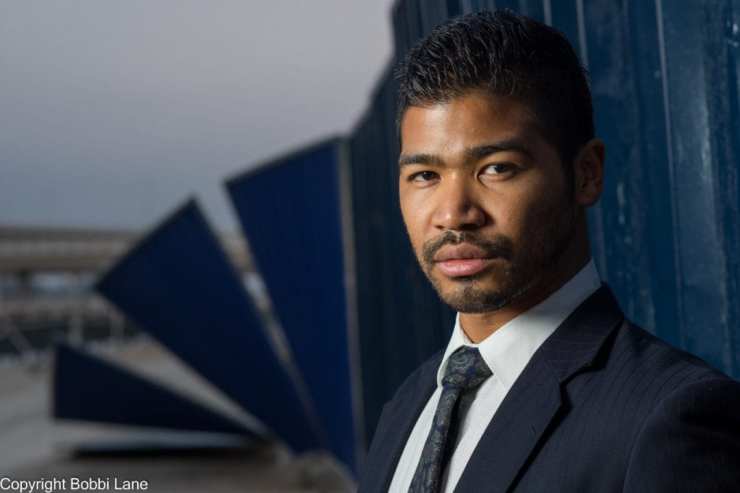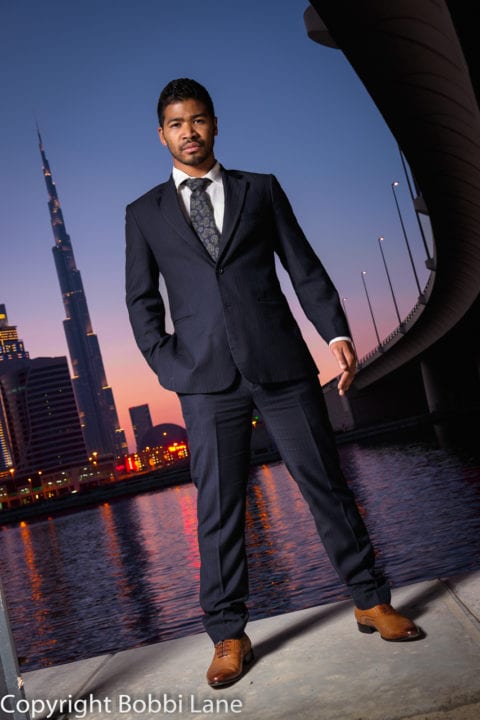The photographer’s best tool is light, and there are many choices. Light is used to mold, define, describe and set the mood of a portrait, so knowing how to recognize the light or control it, is of ultimate importance to the artist.
I’m both a natural light, or “Portraits Unplugged” kind of photographer, and also have a lot of experience with using studio strobes or portable flash, which gives me huge control.
Which kind of light to use?
Knowing how and when to use artificial vs natural can be a challenge. I recently photographed Ceasar deSilva in Dubai, a young, smart executive originally from Chicago, for his modeling portfolio. I scouted several locations in the afternoon with the help of my good friend, Issa Al Kindy, and we found a construction site across the river from downtown Dubai.
In some images we utilized the Burj Khalifa in the background, but for this first set of images I was intrigued by the construction fence that was falling down at one end. By the time Ceasar arrived, the late afternoon light had already faded in the haze. Nothing wrong with it — the light is still beautiful — and I posed him and shot with the Fuji X-T1 with the 56mm f/1.2 lens wide-open for the smallest depth of field. Only his eye is sharp and the bokeh of the fence just rocks.

Switching to flash
The whole scene and Ceasar in his power suit seems to me to require more drama. If the late orange sun was still illuminating his face, I might have stopped there. But I wanted to make it more edgy and define the mood more with directional light and darker shadows. I pulled out my Nikon SB-900 and put it in a softbox. Issa did the great honor of being my “voice activated light stand,” and with my direction, fine tuned the direction of the light.

Balancing the exposure
This now required balancing the background ambient light and the flash. I still wanted to keep the background mostly out of focus, but now I wanted his entire face in focus, not just his eye, so I decided to use f/4. The true background reading was about 1/20s or 1/30s, but I chose 1/60s so that the background would go darker, both the sky and the fence. This helped his face to really pop out from the fence.
I did a test at 1/125s as well, but the background was too dark. The shadows on his face are dark, no fill, which adds to the drama. This is a more powerful portrait, as if he is the man in charge, ready to take over kick some butt!
For the shot of Ceasar at the top of the article, I chose to silhouette him against the skyline with the tallest building in the world and framed by the curve of the bridge. All natural light here, not even a reflector. There was enough light from the sky to give a small illumination to his face as he gazes toward the sky. The last shot is a variation on this by “dragging the shutter”: using a shutter speed slow enough to bring in the skyline and balance it to the flash. Again, it’s the 20-inch soft box on the Nikon SB-900. This vertical image has a different feeling, more direct and strong, while the silhouette is more introspective.

The point? Every situation has a variety of solutions, so be clear about what you want to communicate in the photo. Fine tune your light to match the story of your subject, and don’t settle until you find it!
Tell your story with the second annual Visual Storytelling Conference!
Experience four days of interactive, online training sessions featuring a range of educational content with experienced photographers and content creators. This free event kicks off with a series of technical boot camps to build essential skills, followed by live, online sessions on photography, video, business and social media. Join live from March 10-13, 2022!
